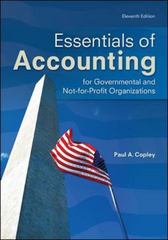Question
You have been asked to place a value on the ownership position in Briarwood Hospital. Its projected profit and loss statements and retention requirements are
You have been asked to place a value on the ownership position in Briarwood Hospital. Its projected profit and loss statements and retention requirements are shown below (in millions):
| Year 1 | Year 2 | Year 3 | Year 4 | Year 5 | |
| Net revenues | $225.0 | $240.0 | $250.0 | $260.0 | $275.0 |
| Cash expenses | $200.0 | $205.0 | $210.0 | $215.0 | $225.0 |
| Depreciation | $11.0 | $12.0 | $13.0 | $14.0 | $15.0 |
| Earnings before interest and taxes | $14.0 | $23.0 | $27.0 | $31.0 | $35.0 |
| Interest | $8.0 | $9.0 | $9.0 | $10.0 | $10.0 |
| Earnings before taxes | $6.0 | $14.0 | $18.0 | $21.0 | $25.0 |
| Taxes (40%) | $2.4 | $5.6 | $7.2 | $8.4 | $10.0 |
| Net profit | $3.6 | $8.4 | $10.8 | $12.6 | $15.0 |
| Estimated retentions | $10.0 | $10.0 | $10.0 | $10.0 | $10.0 |
Briarwood's cost of equity is 16%, its cost of debt is 10%, and its optimal capital structure is 40% debt and 60% equity. The best estimate for Briarwood's long-term growth rate is 4%. The hospital currently has $80 million in debt outstanding.
1. You decide to use the free operating cash flow (FOCF) method to find the equity value of the hospital. What is Briarwood's terminal value at year 5?
2. Now using the free cash flow to equityholders (FCFE) method to find the equity value of the hospital. What is the FCFE in year 1? What is the terminal value? What is the equity value?
Step by Step Solution
There are 3 Steps involved in it
Step: 1

Get Instant Access to Expert-Tailored Solutions
See step-by-step solutions with expert insights and AI powered tools for academic success
Step: 2

Step: 3

Ace Your Homework with AI
Get the answers you need in no time with our AI-driven, step-by-step assistance
Get Started


